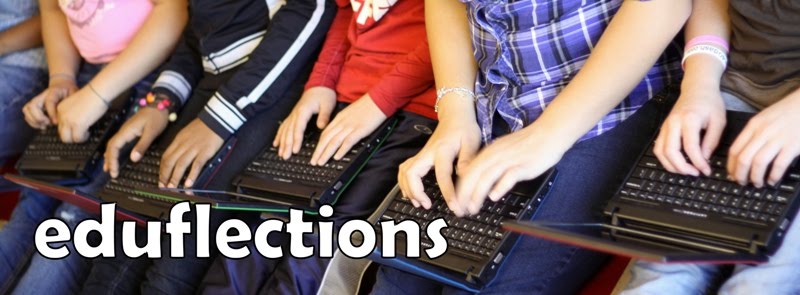As I was presenting my sessions at SDE's National Conference on Differentiated Instruction, several questions arose that I feel like deserve more attention. One thing that I always try to remember is that my perspective is different than many other teachers. Many teachers that attend my presentations and workshops are great teachers, but some haven't made the shift from teacher-driven to student-directed learning. Others want to make that shift, but they don't know how to go about making that a reality; they aren't able to "see" what it looks like in a real honest to goodness classroom.
I know, from my own experience, that it can be a scary proposition to let go of that [illusion of] control; when we are in front of the classroom, we feel like master and commander of our classroom.But the question that I challenge everyone who spends a majority of their time in front of their students disseminating information is: How do you know what each student is grasping while you are leading the instruction?
Does a traditional test measure everything that a learner can learn in a certain subject? Does a right answer necessarily indicate understanding any more than a incorrect answer indicates a lack if understanding? It is crucial for us to each consider the answers to these questions about our own practice. Without taking the time to evaluate and reflect on our own practice, we become irrelevant for our students. We must do what is best for them and their needs and not what is best [or easiest] for us.
Here are some of the queries that were posed to me this week as teachers were trying to "see" how they could make student-directed learning work for them:
1. Are these collaborative projects graded? Yes, a majority of these projects are graded. In my classroom, when we engage in a writing/publishing project, my students brainstorm their ideas of what the final outcome will be. As they begin to formulate an idea, a discussion ensues about what should be included. They decide the purpose, the audience, the tone, the type of writing that will best support the project, the content should be included. As they are discussing this, I'm asking them probing questions, having them justify their choices. They need to understand that the decisions they make should be substantive.
Learning is the ultimate goal. In these discussions, the learners are designing a basic rubric that will guide them and ultimately assess them. They designed it, not me. What do you notice is missing? There is not one mention of the tool that the students will use for their final product. Learners need to understand that the ultimate goal is learning. Technology is just the tool to get them to their ultimate goal.
2. If students aren't assigned a specific tool to use, how do they know what tool will support their project? Most of my students come to me with very limited experience using digital tools. Their previous school experience is mostly "drill and kill" games. So, this is how I do it. The first week of school we do not have any of our "extras" classes. That gives me additional time in the school day to do some additional activities.
One activity in which my students engage is an online scavenger hunt. They work in partners and search all of our class' digital resources and tools that they will find useful throughout the year. In additional to our class website, wikis, and blog, they also search the projects that previous students have published. They are searching for specific information while experiencing a host of different digital options. This gives them a general idea of the types of things that are possible. Do they necessarily know the names of all the tools? No, but they begin to get an idea of what is possible when it comes to publishing.
3. How do you find the time to teach the different tech tools that your students are going to use to publish their work? Since the lack of time is usually our biggest challenge, my students have found several ways to squeeze in more learning time. Many of my students arrive via bus an hour before school begins. When I arrive at school, I invite my students to come to our classroom to work. During this time, I can pull a small group and show them the basics of how a tool works. This is usually a 10 minute or less lesson to several students who a now the class experts.
Many of my students are so excited to begin publishing their work, they don't want to wait until the next morning so they begin exploring a tool on their own. They explore, troubleshoot and depend on their peers if they get stuck. They enjoy becoming independent and working together to problem solve. They depend upon one another. In reality,very little class time is actually spent on the tech tool side of the projects. The focus is always on the learning.
Thanks to all of you for your participation, comments, questions, and challenges this week. I appreciate all if the hardworking that you put into becoming the best teacher that you can be for your students. If you have any more questions, you know how to reach me. I'm only a blog, tweet, Facebook post, or email away.


No comments:
Post a Comment